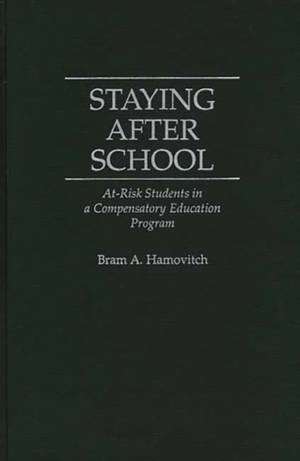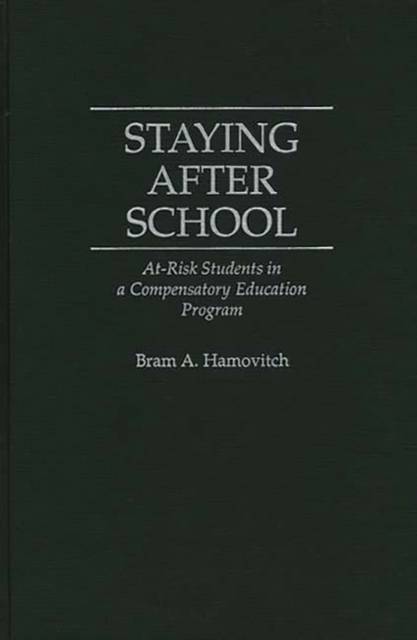
- Afhalen na 1 uur in een winkel met voorraad
- Gratis thuislevering in België
- Ruim aanbod met 7 miljoen producten
- Afhalen na 1 uur in een winkel met voorraad
- Gratis thuislevering in België
- Ruim aanbod met 7 miljoen producten
Omschrijving
Compensatory education for alienated students at risk of dropping out is a recognized part of the educational landscape. This is the first ethnographic study of such a program. It focuses on students and staff at two state-supported sites--one composed of white students, the other being predominantly African American. Participants are paid to attend, and are given academic remediation, counseling, and job assignments in the community. The author found that, unknown to the staff or the state, the program is unsuccessful in its main goal of reintegrating adolescents into their schools. He associates this failure with the program's perception of its students, the trivial curriculum, and the lack of student involvement in planning. ^L ^L
Coming from the perspective of critical theory, the author challenges the mainstream view that this program compensates for deficiencies that individual students bring with them to the classroom. His findings support the idea that the program legitimates stratification by giving potentially disruptive students mixed messages. Operating from an ideology of hope, the program tells students that they should challenge themselves to aspire to become middle class profesionals. At the same time, however, it ignores institutional barriers and fails to give its students the tools they need to succeed in school. This study has implications for all educators attempting to reach at-risk youth.Specificaties
Betrokkenen
- Auteur(s):
- Uitgeverij:
Inhoud
- Aantal bladzijden:
- 144
- Taal:
- Engels
- Reeks:
Eigenschappen
- Productcode (EAN):
- 9780275957018
- Verschijningsdatum:
- 25/03/1997
- Uitvoering:
- Hardcover
- Formaat:
- Genaaid
- Afmetingen:
- 152 mm x 229 mm
- Gewicht:
- 385 g

Alleen bij Standaard Boekhandel
Beoordelingen
We publiceren alleen reviews die voldoen aan de voorwaarden voor reviews. Bekijk onze voorwaarden voor reviews.












